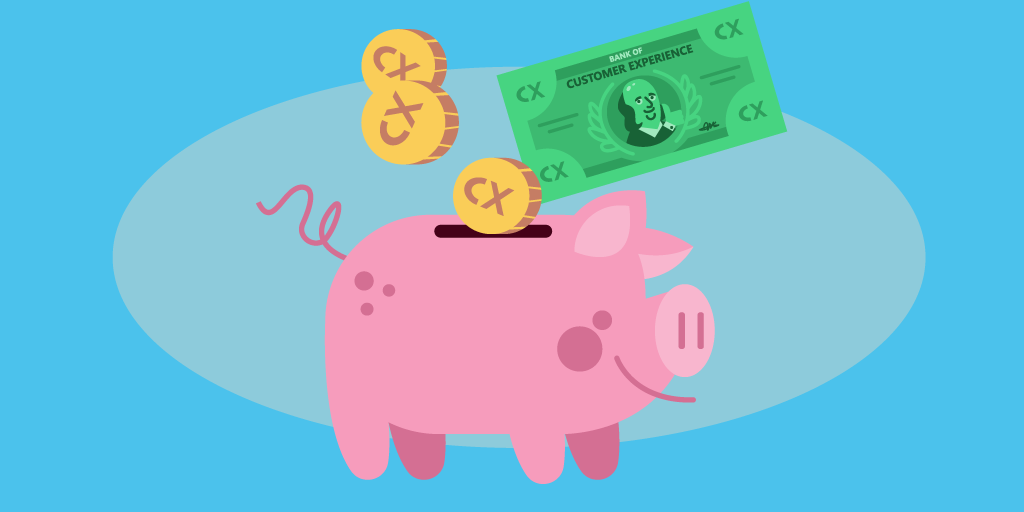Why is it that it always feels like the other line is moving faster than yours?
After filling your basket with the items you need, it’s time to pick a line to check out. You pick the one on the right because it seems to be moving faster. But now that you’re waiting in line, staring at the clock on your smartphone, the line on the left looks like it’s moving faster.
It’s a common bewilderment.
What exactly is going on while we wait in queue? Are other lines moving faster? Or, is there something going in our brains?
Well, in this article we’re setting out to answer, “Why does the other line always move faster?”
How We Experience Time

Don’t worry, we’re not about to launch into a treatise on Heidegger’s Being and Time, but in order to understand lines, we do need to understand the ticking phenomenon a little bit.
Unlike a clock, our personal sense of time is largely subjective and subject to change based on how we feel. Turns out, the hackneyed saying of “Time flies when you’re having fun,” is true.
When we’re enraptured by the moment time really does speed up, at least subjectively.
The opposite is also true. In an experiment, researchers concluded that our attention to the passage of time itself slows it down.
Time slows down when you’re bored when you’re paying attention to time itself. Which is why waiting in line makes time feel slower, and therefore the other line always moves faster as a result.
“The dominant cost of waiting is an emotional one: stress, boredom, that nagging sensation that one’s life is slipping away. The last thing we want to do with our dwindling leisure time is squander it in stasis.”
And what do you think about while waiting in line other than, “When am I getting out of here?” or, “Did that person in the other line check out before me?”
But there’s more than just attention at work to explain why the other line always moves faster.
The Psychology Behind the Wait

We don’t need to be neurosurgeons to continue our investigation into answering why does the other line always move faster. Modern psychology offers a textbook solution.
There’s a common phenomenon called the illusory correlation. What is the illusory correlation? Well, its definition is in the name. The illusory correlation is an illusion.
It’s when our brains perceive a relationship between things — people, behaviors, events, etc. — but the relationship doesn’t exist.
Here’s an illustrative example: superstition holds that all the crazies come out during a full moon but there’s not been any evidence supporting the fact. Still, that doesn’t stop mothers everywhere from warning their children to be careful on brightly lit nights.
The association between full moons and crazy people is an illusory correlation. It’s a cognitive bias our brains can’t refrain from making. No matter who you are, you’ve fallen prey to it.
Okay, now that we’ve cleared the air, let’s take it back to explaining why the other lane is always faster.
The Center of the Line
Why do we make the illusory correlation at all?
It’s due to what’s called salience. Some events, people, or things are more salient than others and that just means that they stand out in our minds, e.g. facts about red wine stab out to people who enjoy their red wine — even if red wine’s ability to ward off cancer is mere correlation.
In other words, salience is just those bits of information in our brains that stand out to us, that we consider important. Still with me? Good, now we can tie it all back together.
Take a second and ask yourself, what is the most salient thing in the world to you? Well, it’s more obvious than you might think. It’s you, yourself.
Back to the Queue

So how does the illusory correlation play into our understanding of queues?
“When my lane is moving along I'm focusing on where I'm going, ignoring the traffic I'm overtaking. When my lane is stuck I'm thinking about me and my hard luck, looking at the other lane. No wonder the association between me and being overtaken sticks in memory more.”
We are the most salient thing while waiting in line. After all, each of us is the center of our own universe.
So we orient every other event in our immediate environment in line around us and feel like a victim of injustice as other people check out before us, hence why the other line is always faster.
The mind can’t help associating others checking out and my personal place in line, making it seem like other lines are moving faster than the one we’ve chosen. And this can lead to all sorts of issues.
But, it’s also true that sometimes other lines really are just moving faster.
Calculating the Probability

Let’s imagine there are four lines to choose from. You decide to pick one, thinking it’s the fastest, and soon find witness as another line is faster. What happened?
Well, statistically speaking, the other line always moves faster meaning the odds are against you. With four lines, there’s a 75% chance that one of the other lanes three will be faster than the one you chose. In effect, you’re gambling to checkout faster.
There’s only a 25% chance you chose wisely.
We can’t beat the math. Sometimes, other lines really are faster and our brains aren’t fooling us. Though it can be hard to differentiate when we may be victims of the illusory correlation and when our gut-feeling is on point.
There are a few tips we can practice to checkout faster. Drawing on the book Why Does the Other Line Always Move Faster? Metro offers some queuing tips:
Choose lines that are on the left side of the store; because most people are right-handed they tend to queue in lines leaning to the right.
Check out with cash, it’s typically faster than swiping with a credit card.
Perhaps not intuitively, it’s the number of people in front of you that matters, not how much they’re buying.
Men are more impatient than women and are more likely to leave the queue than stick around (line up behind men).
Even if you abide by each of the above though you may not find yourself with a receipt in your hand in as timely a manner as you like.
The other line always moves faster not just because of psychology but because of some simple math. Of course, when we’re physically waiting in line those explanations don’t matter much. All that matter is that the other line always moves faster.
Businesses can take steps to reduce customer frustration. The biggest one being adopting a queue management system like Qminder. Qminder helps businesses organize their lanes in an efficient and stress-free manner so that no one spends their waiting thinking, “the other lane is always faster.”






